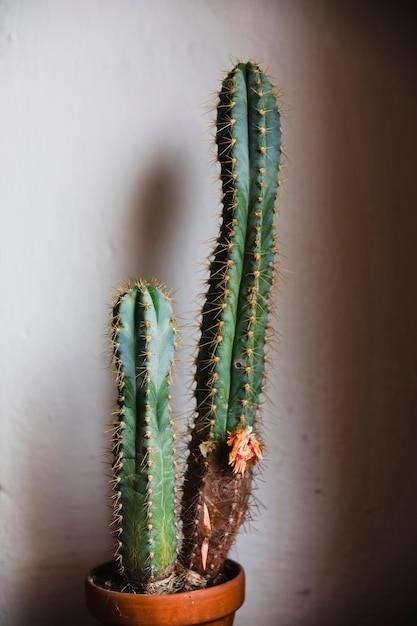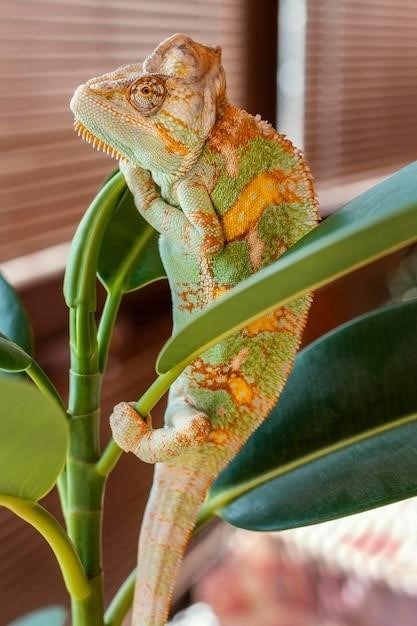
crested gecko morph guide
This guide explores the fascinating world of crested gecko morphs, providing a comprehensive overview of the various colors, patterns, and genetic factors that contribute to their unique appearances․ Discover the popular morphs, delve into the science behind their genetics, and explore resources to deepen your understanding of these captivating creatures․
Introduction
Crested geckos, with their adorable appearance and docile nature, have become a popular choice for reptile enthusiasts․ One of the most captivating aspects of these creatures is their incredible diversity in colors and patterns, known as morphs․ These variations are the result of selective breeding, showcasing the incredible potential for variation within this species․
This guide delves into the world of crested gecko morphs, exploring the fascinating genetic factors that create these unique appearances․ From the classic Harlequin to the striking Lilly White, we’ll uncover the history, characteristics, and popularity of various morphs․ Whether you’re a seasoned breeder or a curious beginner, this guide will provide a comprehensive understanding of the captivating world of crested gecko morphs․
What are Morphs?
In the context of crested geckos, “morphs” refer to the variations in color, pattern, and sometimes even physical structure that have been developed through selective breeding․ These variations are not simply aesthetic; they are the result of specific genetic combinations passed down through generations․ Think of it like the different breeds of dogs, each with their own distinct features․

Understanding crested gecko morphs involves recognizing that these traits are not random occurrences․ They are the product of careful breeding practices, where individuals with desirable traits are selectively paired to produce offspring that inherit those traits․ This process, over time, has led to the incredible diversity of crested gecko morphs we see today․
Popular Crested Gecko Morphs
The world of crested gecko morphs is vast and constantly evolving, but there are certain morphs that stand out as particularly popular among enthusiasts․ These morphs are often sought after for their unique appearances, rarity, and the intriguing genetic factors that contribute to their development․
While the exact number of popular morphs can vary depending on the source, some of the most commonly recognized and admired include the Harlequin, Pinstripe, Dalmatian, Lilly White, and Axanthic morphs․ Each of these morphs possesses distinctive features, from bold patterns to striking color variations, making them a captivating part of the crested gecko hobby․
Harlequin
The Harlequin morph is a captivating sight, characterized by its striking and often unpredictable pattern․ It’s like a patchwork of colors and markings, creating a visually stunning and unique appearance․ Imagine a crested gecko with a mosaic of bright, contrasting colors splashed across its body, a testament to the fascinating genetic interplay at work․
This morph is often described as “piebald,” with patches of color interspersed throughout its body․ The Harlequin morph can exhibit a wide array of colors, from vibrant reds and yellows to more subtle browns and grays, making each individual a unique work of art․ The Harlequin morph is a popular choice for crested gecko enthusiasts, appreciated for its striking beauty and the element of surprise it brings to each gecko’s individual pattern․
Pinstripe
The Pinstripe morph is a classic and elegant choice among crested gecko enthusiasts․ It’s defined by a series of thin, delicate lines that run vertically down the gecko’s body, resembling the pinstripes found on a tailored suit․ These lines can vary in width and intensity, creating a range of subtle to striking patterns․ The Pinstripe morph can be found on various base colors, adding another layer of visual intrigue․
Imagine a gecko with a deep, rich brown base color adorned with thin, white lines, like a miniature masterpiece․ The Pinstripe morph is a subtle yet captivating addition to any crested gecko collection․ It’s a testament to the beauty of simplicity and the elegance of fine detail․ The Pinstripe morph is a reminder that sometimes, less is truly more․
Dalmatian
The Dalmatian morph evokes images of the iconic spotted dog breed, and crested geckos sporting this pattern live up to the comparison․ These geckos are characterized by a base color that’s covered in a scattering of white or cream-colored spots․ The spots can range in size and density, creating a wide spectrum of patterns from subtle speckles to bold, dramatic markings․
A Dalmatian crested gecko might have a base color of warm brown or a cool gray, both adorned with a constellation of white spots․ The contrast between the base color and the spots creates a visually dynamic effect, making these geckos stand out in any collection․ The Dalmatian morph is a reminder that even the smallest details can make a big difference in the world of crested gecko aesthetics․
Lilly White
The Lilly White morph is a captivating example of the genetic diversity within crested geckos․ These geckos are characterized by their striking lack of pigmentation, resulting in a predominantly white or very pale coloration․ The absence of typical brown or gray tones creates a striking visual contrast, highlighting the gecko’s intricate patterns and features․
While Lilly White crested geckos might appear completely white, they often exhibit subtle variations in their coloration, with some individuals displaying a faint blush of pink or a hint of cream․ These subtle variations add to their charm and make each Lilly White gecko unique․ This morph is a testament to the fascinating world of gecko genetics and the incredible range of color variations that can be found within this species․
Axanthic
The Axanthic morph is a striking deviation from the typical coloration of crested geckos․ These geckos lack the yellow pigment that is normally present in their skin, resulting in a unique and striking appearance․ Axanthic crested geckos often display a vibrant orange or red coloration, particularly in their eyes and on their crests․ This vibrant coloration is due to the absence of yellow pigment, allowing other pigments to dominate․
The Axanthic morph is a popular choice for crested gecko breeders and enthusiasts alike․ Their unique appearance and striking color variations make them a fascinating addition to any collection․ This morph is a testament to the incredible genetic diversity found within the crested gecko species․ The Axanthic morph is a true marvel of nature․
Understanding Crested Gecko Genetics
The captivating diversity of crested gecko morphs is a result of selective breeding and the intricate interplay of their genetics․ Understanding the basic principles of crested gecko genetics is essential for appreciating the unique characteristics of each morph; Crested gecko morphs are primarily determined by two main categories⁚ color morphs and pattern morphs; Color morphs relate to the overall shade and hue of the gecko, while pattern morphs focus on the arrangement of markings and designs․
These morphs are often polygenic, meaning they are influenced by multiple genes․ However, some morphs, such as Lilly White and Axanthic, are known to be determined by single genes with specific inheritance patterns․ The complex interaction of these genes creates a vast array of possibilities, leading to the remarkable variety of crested gecko morphs we see today․ As more research is conducted, our understanding of crested gecko genetics continues to evolve, further illuminating the captivating world of these fascinating creatures․
Color Morphs
Color morphs in crested geckos encompass the spectrum of shades and hues that adorn these captivating creatures․ From the classic browns and grays of the wild type to the striking reds, oranges, and yellows of some morphs, color variations contribute significantly to their unique appeal․ These color morphs are often influenced by the presence or absence of specific pigments, such as melanin, which is responsible for brown and black coloration․ Other pigments, like carotenoids, contribute to the vibrant reds and yellows seen in certain morphs․
The intensity of color can also vary depending on factors like lighting, temperature, and even the gecko’s mood․ This phenomenon, known as “firing up” and “firing down,” allows crested geckos to adjust their coloration for camouflage or social signaling․ Exploring the fascinating world of color morphs reveals the intricate beauty and complexity of crested gecko genetics, highlighting the artistry of nature and the skill of breeders in cultivating these mesmerizing variations․
Pattern Morphs
Pattern morphs add another layer of intrigue to the captivating world of crested geckos․ These variations in markings and designs create a visual tapestry of unique aesthetics․ From the classic speckled patterns of the wild type to the bold stripes and intricate swirls of some morphs, patterns contribute significantly to the individual charm of each crested gecko․ These patterns are often influenced by the distribution of pigment and the interplay of genetic factors․
Some common pattern morphs include “harlequin,” characterized by large, contrasting patches of color, and “pinstripe,” featuring delicate, fine lines running along the body․ “Dalmatian” morphs showcase a distinctive spotted appearance reminiscent of the iconic canine breed․ Understanding the genetic basis of these patterns allows breeders to selectively pair crested geckos to produce offspring with desired markings, adding to the diversity and allure of these fascinating reptiles․ The world of pattern morphs reveals the intricate beauty of nature’s artistry, captivating enthusiasts and breeders alike․
Crested Gecko Morph Guide Resources
For those eager to dive deeper into the fascinating world of crested gecko morphs, numerous resources are available to expand your knowledge․ Online forums like Pangea Reptile, Repashy, and others provide platforms for enthusiasts to share their experiences, discuss breeding strategies, and exchange insights on identifying various morphs․ These forums often feature dedicated sections for morph discussions, enabling you to connect with experienced breeders and gain valuable knowledge․
Additionally, websites and blogs dedicated to crested gecko care offer detailed information on morphs, genetics, and husbandry․ These online resources often include comprehensive guides, photo galleries, and even morph calculators to aid in predicting potential offspring phenotypes․ By engaging with these online communities and exploring dedicated websites, you can embark on a journey of continuous learning and appreciation for the diverse world of crested gecko morphs․
The captivating world of crested gecko morphs offers a testament to the wonders of selective breeding and the fascinating diversity found within this species․ From the striking patterns of the Harlequin to the captivating presence of the Axanthic, each morph showcases a unique combination of colors and patterns, contributing to the appeal of these adorable geckos․ Understanding the genetic basis behind these variations allows breeders to create and preserve specific traits, further enhancing the beauty and uniqueness of crested geckos․
Whether you are a seasoned breeder or a curious enthusiast, exploring the world of crested gecko morphs provides an enriching journey of discovery․ By delving into the resources available, engaging with online communities, and appreciating the science behind these variations, you can deepen your appreciation for these remarkable creatures and their captivating diversity․
Leave a Reply
You must be logged in to post a comment.